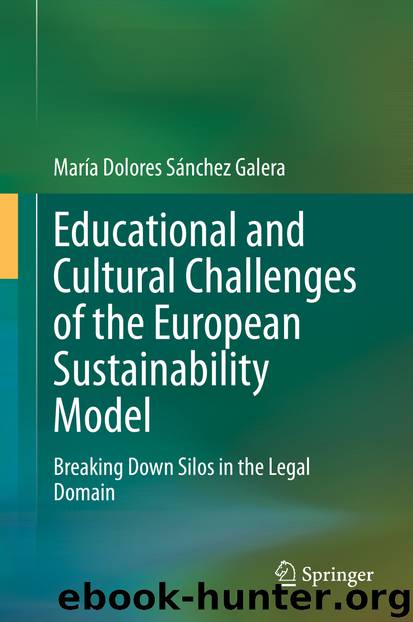Educational and Cultural Challenges of the European Sustainability Model by María Dolores Sánchez Galera

Author:María Dolores Sánchez Galera
Language: eng
Format: epub
ISBN: 9783030387167
Publisher: Springer International Publishing
Those reports analyse a range of issues that have a significant impact on human development like human security, mobility, global warming and cultural freedom, etc.93 It is in this context that “culture” began to be depicted as a very prominent dimension of human development (Owosuyi, 2015). Furthermore, in 1998, the International Conference on Cultural policies for Development held in Stockholm proposed that governments should recognised culture in such way that cultural policies become “one of the key components of endogenous and sustainable development”. However, the most significant role for the enhancement of cultural diversity as a key issue for sustainability and development is held by the International Convention on the Protection of Diversity of Cultural Expressions (2005), also known as the Convention on the Diversity of Cultural Expressions. It enshrined an important premise: “culture shapes the ideology of development and conditions how people interact with the environment”. Article 13 of the Convention (that I will discuss further on its 2015 edited version) encourages Member States to integrate culture in their development policies at all levels for the creation of the right conditions for sustainable development.
It is for this reason that it seems a drawback in the international sphere the lack of a formalised recognition of culture as part of the UN SDGs. There is not a recognition of culture as an expressive and dynamic force for development at every level and in every context in the most sounded international cooperation engagement for sustainable development in defence of our ‘Planet’. Therefore, the direct consequence of this is clear, there will be no culture-focused programming followed by evaluations and reports that is mandatory within the context of international cooperation even if the Agenda itself is not a binding instrument. Still, this is a challenge that needs to be solved. A closer look to the agenda and their detailed targets shows important mentions to the cultural component although in the education goal, a reference to safeguarding cultural heritage in cities and human settlements as part of sustainable cities, food security, the environment, economic growth, and it is also featured twice with reference to tourism as part of sustainable economic development, production and consumption. These references, plus increasing local awareness, the governance mechanisms available and research and policy development on the strategic role of culture for sustainable development worldwide at local and national level open the door for new conceptual frameworks and systemic approaches in which culture interacts with other systems interconnecting parts that create a whole. Such conceptual frameworks not only recognise the prides of the Agenda on the many venues of implication of different stakeholders, especially civil society, but also on identifying art, creativity, education as ‘tools’ to integrate science, technology, philosophy, emotions, and include the local, regional, national and international sphere. From this achievement, a big educational reform that has not taken place yet should come about.
In fact, if one goes through the literature of the history of education, education policy according to some scholars has gone through two main necessary reforms that reflect the cultural and socio-political momentum (Lundgren, 1982).
Download
This site does not store any files on its server. We only index and link to content provided by other sites. Please contact the content providers to delete copyright contents if any and email us, we'll remove relevant links or contents immediately.
International Integration of the Brazilian Economy by Elias C. Grivoyannis(75501)
The Radium Girls by Kate Moore(11626)
Turbulence by E. J. Noyes(7708)
Nudge - Improving Decisions about Health, Wealth, and Happiness by Thaler Sunstein(7255)
The Black Swan by Nassim Nicholas Taleb(6773)
Rich Dad Poor Dad by Robert T. Kiyosaki(6185)
Pioneering Portfolio Management by David F. Swensen(6083)
Man-made Catastrophes and Risk Information Concealment by Dmitry Chernov & Didier Sornette(5659)
Zero to One by Peter Thiel(5498)
Secrecy World by Jake Bernstein(4393)
Millionaire: The Philanderer, Gambler, and Duelist Who Invented Modern Finance by Janet Gleeson(4107)
The Age of Surveillance Capitalism by Shoshana Zuboff(3991)
Skin in the Game by Nassim Nicholas Taleb(3973)
The Money Culture by Michael Lewis(3851)
Bullshit Jobs by David Graeber(3837)
Skin in the Game: Hidden Asymmetries in Daily Life by Nassim Nicholas Taleb(3731)
The Dhandho Investor by Mohnish Pabrai(3564)
The Wisdom of Finance by Mihir Desai(3531)
Blockchain Basics by Daniel Drescher(3332)
